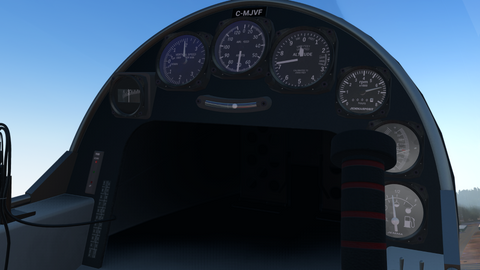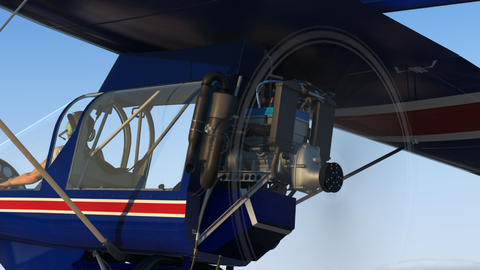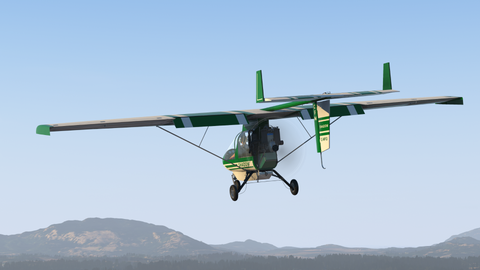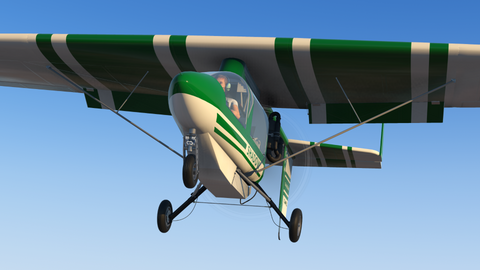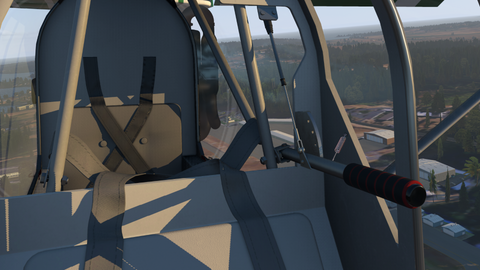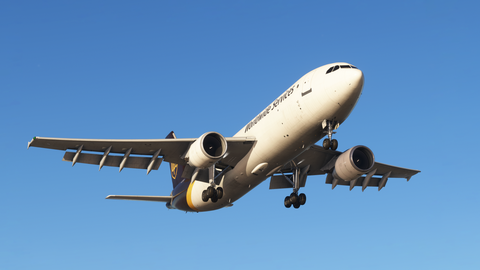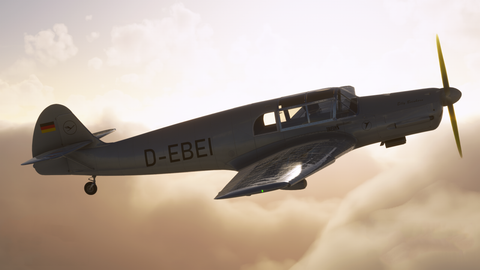AIRCRAFT
- Filter By:
Get ready to experience flight simulation like never before with the iniBuilds A350 Airliner for Microsoft Flight Simulator 2024 & 2020. Our team has carefully crafted almost every element of this next-gen widebody, blending cutting-edge simulation technology with real-world performance data and pilot feedback. Created from the ground up for MSFS 2024 & 2020, this premium aircraft offers unparalleled immersion and realism, from the cockpit to the cabin, delivering a breathtaking simulation experience. Explore the incredible feature set that makes this release a must-have for all serious flight simmers.
The A350 for flight simulation offers advanced flight systems like a fully interactive MCDU, MORA, SND, lateral offsets, ADS-B, and FLS/GLS landing systems, with custom terrain radar and GPS jamming for added realism. Its immersive cockpit features a detailed 3D model with animated components, interactive avionics, and customizable accessories, ensuring a realistic pilot environment. In FS24, a functioning virtual cabin introduces dynamic lighting, animated doors, and challenging cabin scenarios. The exterior boasts ultra-detailed models with animated elements and realistic textures, while an authentic WWise sound set enhances the experience with environmental audio cues and Trent XWB engine sounds.
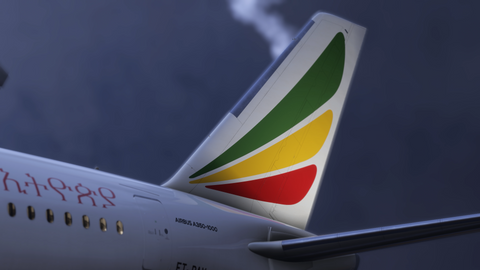
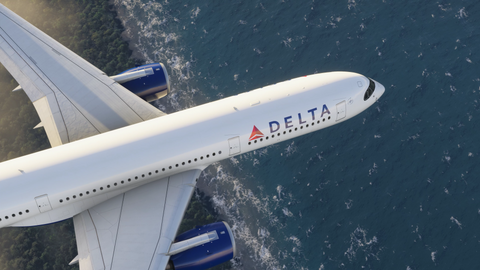

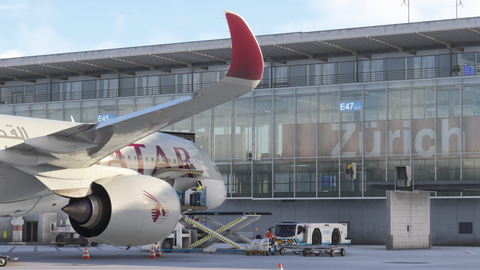
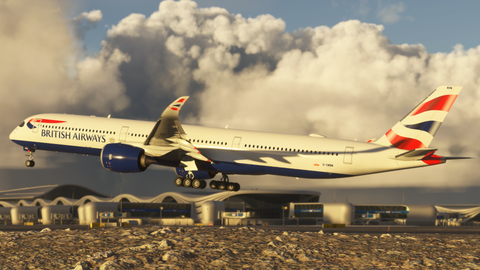

The M2K-C "Spectre" is a multirole, single-engine, delta-wing, fourth-generation jet fighter inspired by French aircraft design.
This aircraft boasts impressive maneuverability, speed, and versatility, making it suitable for a wide range of missions, including air superiority, ground attack, and reconnaissance. Its design is sleek and agile, reflecting the French emphasis on aerodynamic efficiency and performance.
M2K-C is powered by a single engine providing 54.0 kN Thrust, with a single-stage Afterburner boosting the aircraft to 84 kN (19,000 Lbf). Maximum speed is Mach 2.2 at 60,000 ft, and a range of roughly 850 Nautical Miles, which can be extended with external tanks.
Though primarily an interception and air-to-air combat, the M2K-C can conduct multirole operations, ranging from Aerial Bombing, Air-to-Air combat, Air Support, among others. At Miltech, we once again push the boundaries of the simulator to create a unique and revolutionary gameplay experience in MSFS.
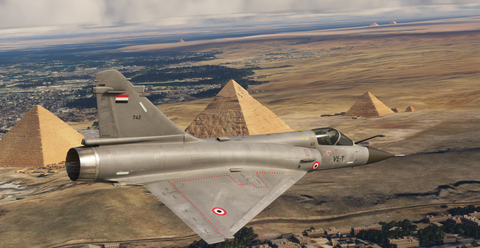
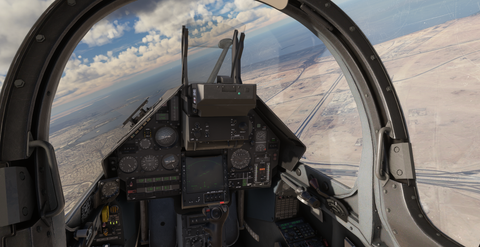
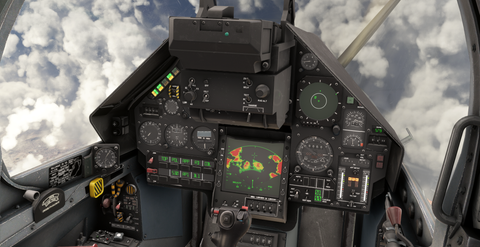



The CH2000 is a two seat, single engine general aviation aircraft. While being relatively unheard of, it is the perfect aircraft to start your training in, and could be a competitor to many other trainers including the Cessna 152. Having the same engine and low wing design, the CH2000 offers better performance with short field takeoff's and ground effect behaviours. Though the controls feel a little sluggish due to its small wingspan and long chordline, the CH2000 is a fun and squirrely airplane to fly. SimSolutions CH2000 is a faithful rendition of the real aircraft with high-resolution 8K textures, accurate flight characteristics, and an accurately modelled airframe.
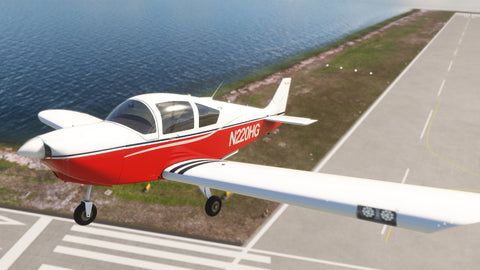


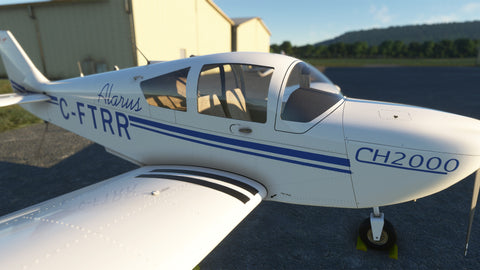
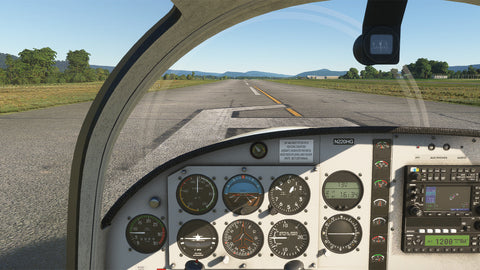
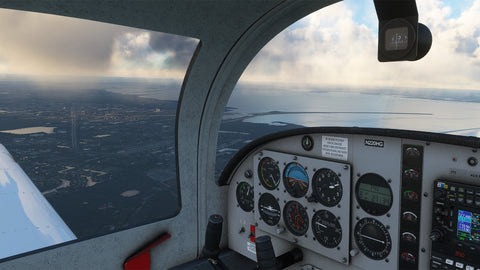
A Return to Excellence: The iniBuilds A300-600R Airliner for MSFS 2024 - Premium Edition
Building on the success of our iconic A300 in MSFS2020, we are proud to bring the iniBuilds A300-600R Airliner to Microsoft Flight Simulator 2024. This legendary aircraft has been redefined for the latest generation of flight sim technology, offering a premium experience with new features and optimizations for the ultimate classic airliner adventure. Explore the world of aviation with unmatched realism—check out the exciting new features below!
If you own the 2020 version of this product, you are eligible for a special upgrade price! Use the code ‘A300-UG’ at checkout to purchase the product for £9.99 (excl VAT.).
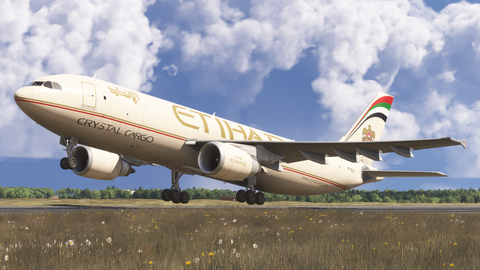
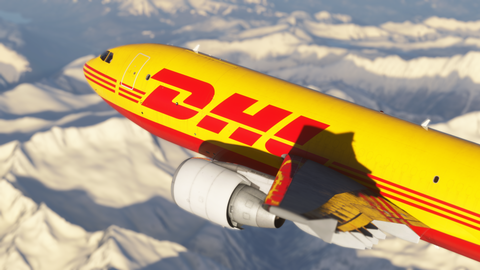

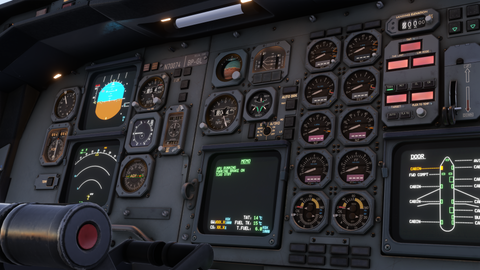
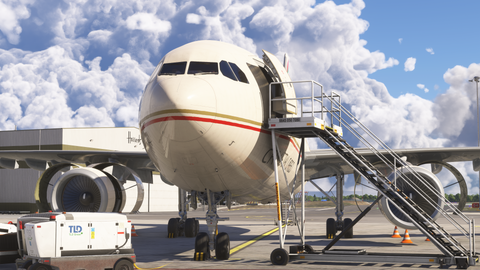
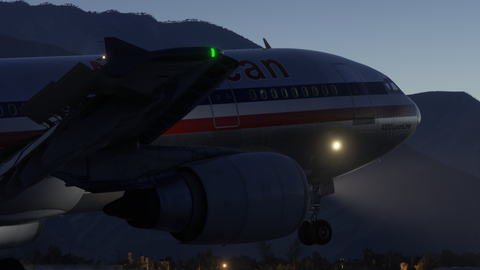
Introducing the Supersonic Titan of the Skies! The Bone, renowned for its speed and power, has been crafted by industry veterans, bringing you a top-tier, interactive, and accessible flight experience! This powerful aircraft comes loaded with fantastic features, including some that are exclusively available through the iniBuilds Store.The Bone blends the excitement of high-speed flight with the cutting-edge technology of stealth, all while delivering a dynamic flying experience.
With a sleek exterior and detailed interior, this aircraft sets a new standard for immersion in your flight simulations. KwikFlight has also included a stunning range of liveries—both real and fictional—so you can dominate the skies in style. Every element of this aircraft makes it a must-have addition to your virtual hangar!





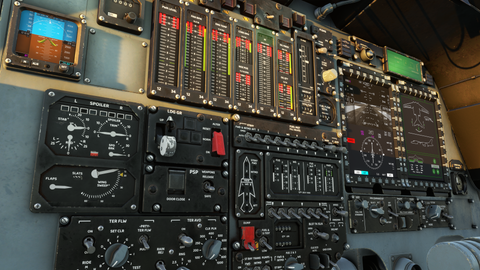
The ASK 21 is a popular German two-seater glider, first built in 1979. It is primarily used for beginner instruction and aerobatics training, as well as for transitioning pilots from older wooden gliders like the K 8 to modern single-seat composite gliders. Capable of withstanding g-loads of +6.5 and -4G, it has a maximum speed of 280 km/h. Despite not having the best glide ratio, it is appreciated for its well-balanced handling and safety. The ASK 21 is a well-constructed and robust glider with forgiving flight characteristics.
This simulator version aims to replicate the real aircraft as accurately as possible, featuring authentic custom sounds, a fine-tuned aerobatics-capable flight model, and stunning visuals. Developed in collaboration with real ASK 21 pilots, the f7 Simulations K21 strives to be the most authentic glider available for flight simulators.

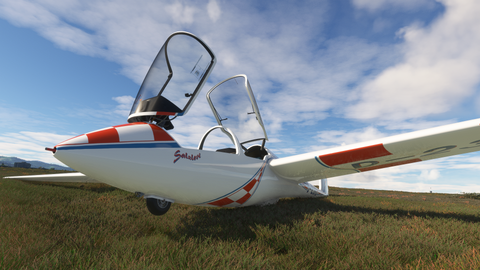
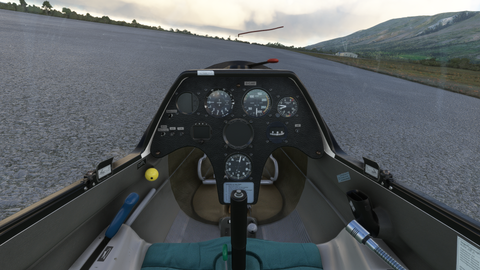
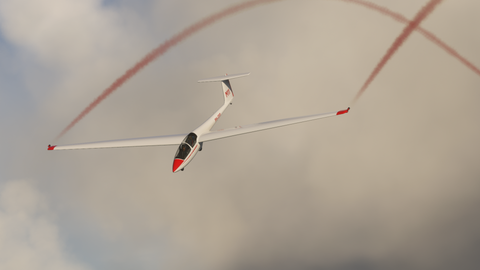


Eviation Alice Full Electric Aircraft For Microsoft Flight Simulator 2020
The Eviation Alice is a fully electric aircraft, a first of its kind for MSFS. The first prototype was unveiled at the 2019 Paris Air Show, then in 2021 the second prototype that actually went flying was unveiled.
On the 27 of September 2022 the Eviation Alice second prototype took off for the first and last time.
The second prototype performance in flight were way worse than the calculated performance.
Eviation Alice is now working on a third prototype.
This Eviation Alice is based on the second prototype and follows the calculated performance and not the performance from its first flight.



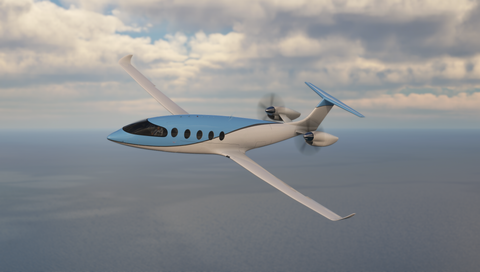
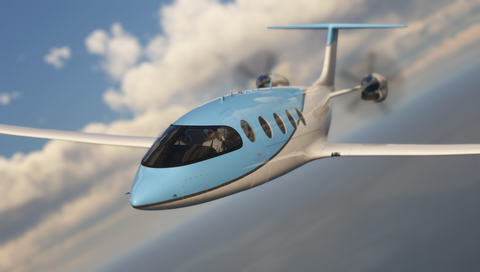
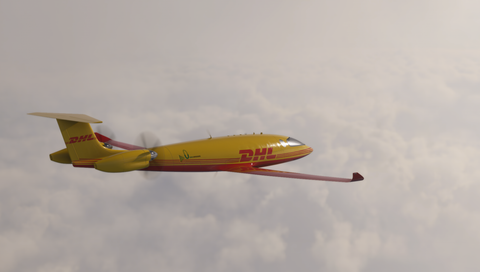
Now fully compatible with MSFS2024!
Zip up your G-suit, grab your helmet and strap into the T-33 Jet Trainer! Developed as a collaboration between iniBuilds and SimWorks Studios, the T-33 is a versatile, turbojet training aircraft, used by over 20 different air forces globally. As the first Skunk works project it initially entered service in 1945 as the P-80 Shooting Star, America’s first jet fighter and the 2 seat variant debuted in I948 as the TF-80c then it was re designated the T-33. It served in a variety of roles, from initial jet training platform to advanced IFF trainer to drone director, target towing, aggressors and even flew combat in the Korean conflict!
This carefully designed aircraft brings a new level of realism and immersion to your virtual hangars, featuring highly detailed textures that render every rivet and panel with stunning accuracy.
The in-depth, realistic systems simulations allow you to dive deep into its intricacies, from avionics to engine management. Experience true-to-life handling characteristics and interact with a fully functional cockpit where almost every switch, dial, and gauge is operable.
Learn how to fly this magnificent machine with the assistance of our very own Cameron! Watch the "Welcome To" video for a deep dive into the history and nuances of this aircraft and learn how to accurately and safely fly the T-33 Jet Trainer: Welcome To The T-33 Jet Trainer
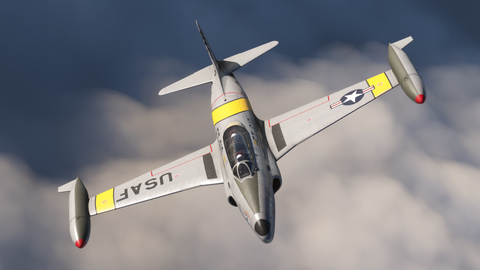





The Horten Ho 229 was a German prototype fighter/bomber that was designed by Reimar and Walter Horten during World War II. It was one of the first flying wing aircraft to be powered by jet engines, and had several remarkable features, such as: It was very fast and agile, capable of reaching speeds of up to 977 km/h (607 mph) and performing tight turns and rolls. It could also fly at high altitudes, up to 15,000 m (49,000 ft), making it difficult to intercept by allied fighters.
It was very stealthy, due to its low radar cross-section and its use of a special wood-based material called "charcoal mixture" that absorbed radar waves. It was estimated that the Ho 229 would have been invisible to radar at distances greater than 80% of its range.
It was very advanced, incorporating features such as an ejection seat, a pressurized cockpit, a tricycle landing gear. It also had a sophisticated weapons system, consisting of two 30 mm cannons and two 500 kg (1,100 lb) bombs.
The Ho 229 was the only design that came close to meeting the "3×1000" requirement issued by Hermann Göring, the head of the Luftwaffe, for a light bomber that could carry 1,000 kg (2,200 lb) of bombs over 1,000 km (620 mi) at 1,000 km/h (620 mph). However, the project faced many challenges and delays, such as the lack of suitable production facilities, the interference of rival companies, the shortage of materials and fuel, and the Allied bombing raids. Only three prototypes were built, and only one of them flew, before the project was captured by the American forces in 1945.
The Ho 229 was a remarkable aircraft that was ahead of its time, and may have influenced many later designs, such as the Northrop B-2 Spirit and the Lockheed F-117 Nighthawk. It is considered by some to be the first true stealth aircraft in history. The only surviving prototype, the Ho 229 V3, is currently on display at the Smithsonian National Air and Space Museum in Washington, D.C
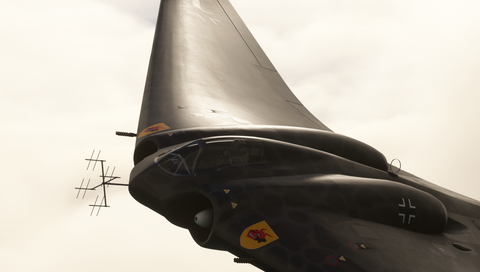

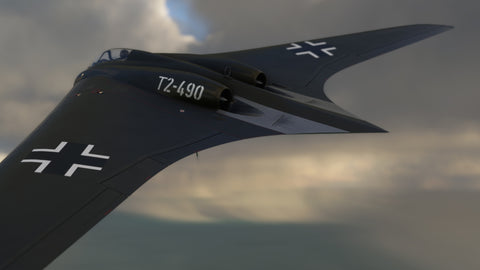


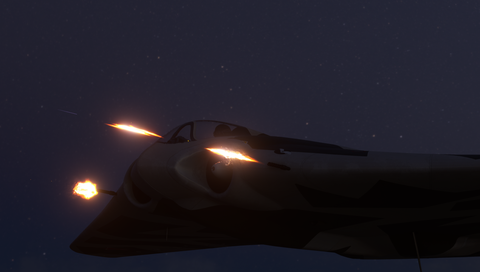
Virtualcol is thrilled to bring you a recreation of the model 99 Commuter for Microsoft® Flight Simulator®, including the analog cockpit and glass cockpit, with the option to change directly from the cockpit, open the main door, and modify the baggage container located down of the fuselage using the tablet included. The version also includes 20 liveries, and the freighter version with one livery.
NOTE: This product is NOT Study Level, recommended for beginners and flight simmers.
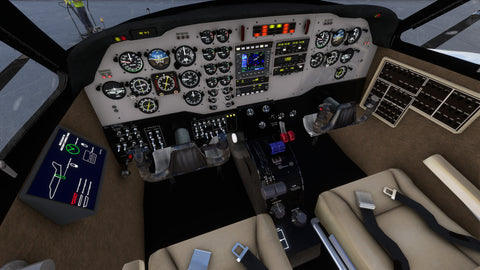
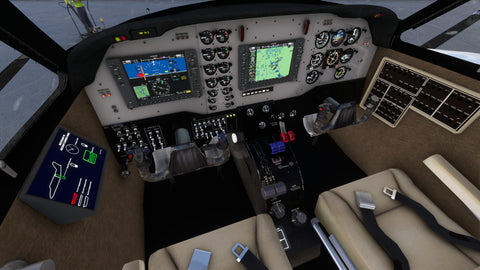
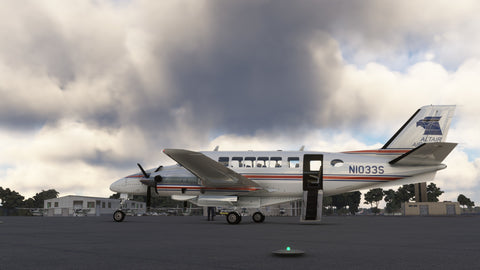
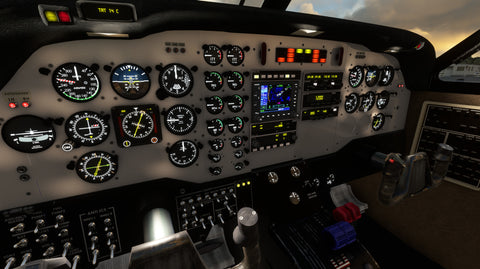

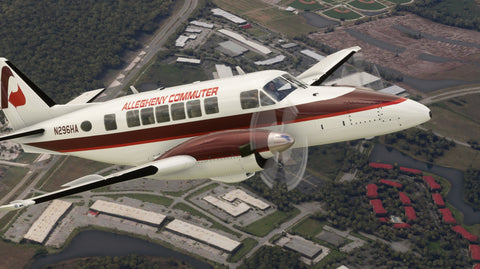
Pilot Experience Sim presents the Drone FPV racer. The flight model is custom coded and it represents a racing drone in kit form for assembly. The elements are made of carbon and include a lipo battery and the sounds come from a real drone.
In addition to the fun of flying this drone in a variety of conditions, it's a great tool for filming incredible traveling shots.




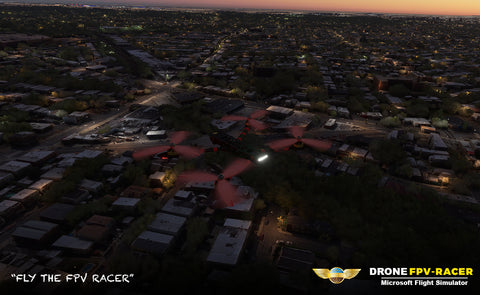

At Cowan Simulation we strive for perfection and continuously update our fleet using valuable feedback from pilots around the world. The R66, and subsequent releases, will continue to be developed using that valuable information. Please remember that updates take time. All good things take time.
CowanSim’s flight models are pilot tested, approved and developed with the Microsoft Flight Simulator SDK. No external flight model/dynamics or programs are used to provide a seamless user experience.
The throttle and idle stop on this model can be mapped to your hardware. All other bindings are functional as well. This helicopter uses persistence code to save your weight and balance settings, as well as all visible options/models, for your next flight. Please read the manual that comes with this helicopter, it will answer a lot of your questions and has a clear explanation for all hardware bindings. The manual is located inside of the package folder.
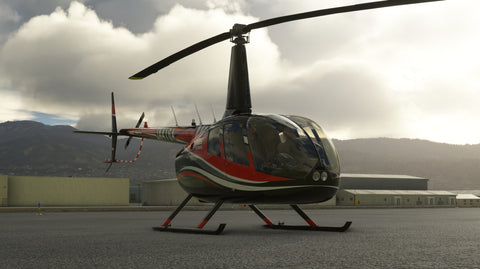
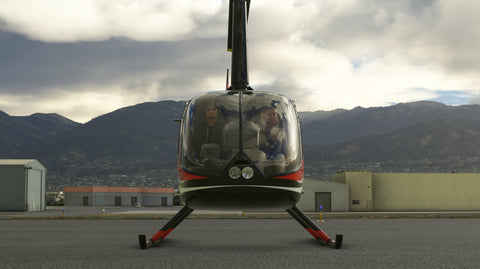
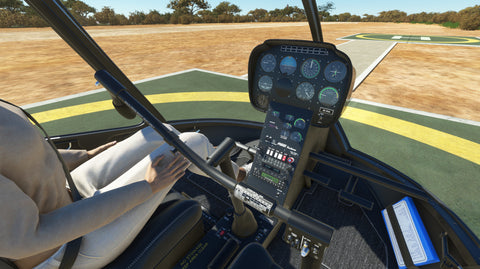

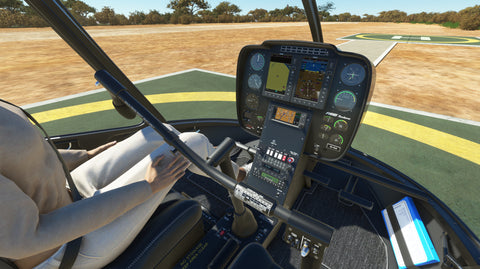
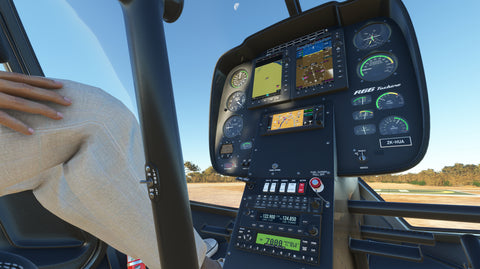
Zivko Edge540 v2 For Microsoft Flight Simulator 2020
The Zivko EDGE 540 is a single-engine one seater aerobatic aircraft capable of 420 degree per second roll rate and a 3,700 foot per minute climb rate produced by the American manufacturer Zivko Aeronautics
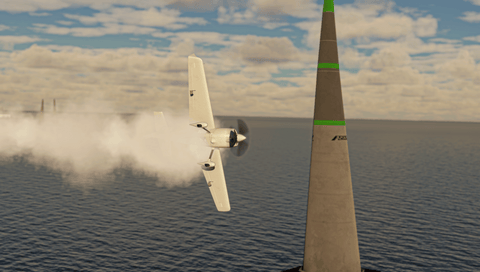
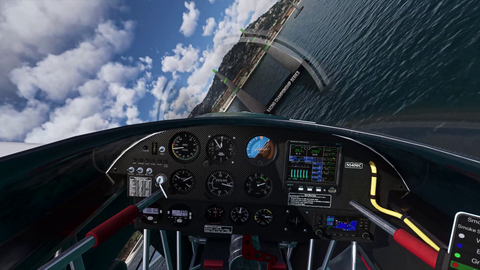

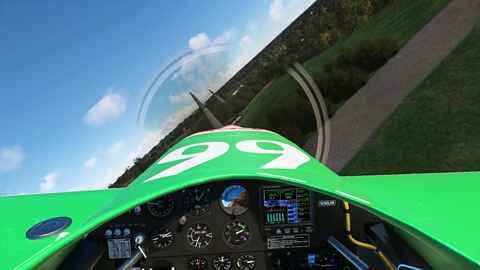


THIS IS THE A300-600R AIRLINER FOR MSFS2020 (Compatible with MSFS2024 in a Beta state, no new features). You can find the A300-600R Premium Edition HERE
A return to our flagship product - Welcome to the iniBuilds A300-600R Airliner
Following the renowned success of this aircraft in XP, we launch our first airliner for Microsoft Flight Simulator under the iniBuilds brand - the iniBuilds A300-600R Airliner. It is time for the ultimate classic airliner experience, so check out some of the exciting features below!
Checkout what FSElite had to say about the product! - CLICK HERE
Please note: The MSFS2024 compatible version, 1.1.3, is being initially released in a Beta state. While the product is functional we've identified a few areas that require further refinement before we identify it as fully compatible. Some known issues that are still under investigation: Terrain Display, Loss of overhead Korry switch and ambient packs/bleed sounds when switching views, Random TCAS RA errors from own plane & Networking issue.





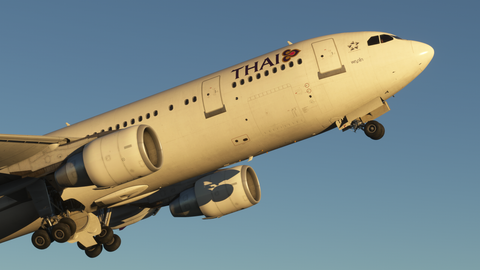
Aiming to be the most detailed simulation of the fabled PC-12 to date, the SWS team have put together their most advanced turboprop aircraft yet. Featuring a highly detailed model, authentic sounds, custom avionics and smooth handling, this is the aircraft to fly in Microsoft Flight Simulator!
Powered by a 1200hp engine and a 4 or 5-bladed propeller, the PC-12 can easily operate out of short, unprepared strips as well as paved runways, while Its superb engineering ensures a smooth flight even in adverse weather conditions. Versatile by design, the PC-12 can be configured for use as an executive transport, commuter, cargo carrier or even air ambulance.
Developed with the help of Pilatus Aircraft and Fly7 Executive Aviation, the SWS PC-12/47 aspires to be our best and most varied turboprop rendition in Microsoft Flight Simulator to date!
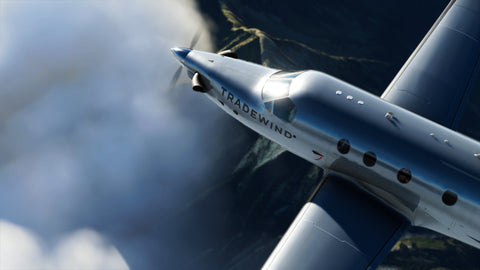
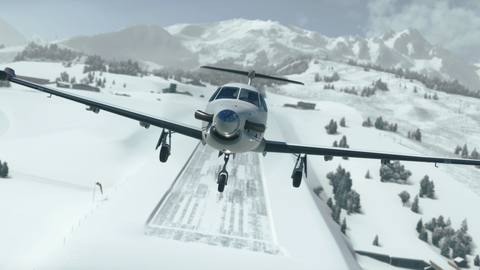
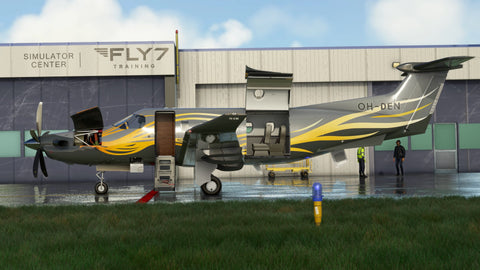


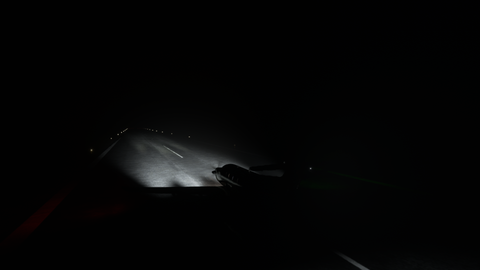
The Eagle S100 is a high performance prototype aerobatic aircraft for freestyle, competition flying and racing. This aircraft features one of the most realistic aerobatic flight models for MSFS, considering the current limitations and will be updated frequently to make it even better.
The aircraft is based on my own design and is inspired by many different aerobatic aircraft like the MXS, Extra NG, Votec 351 and Raven.

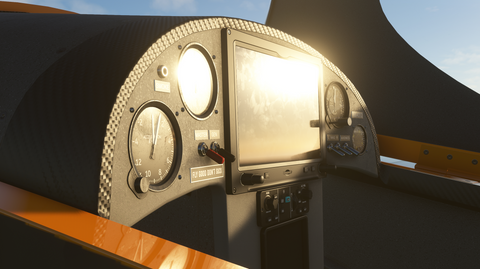

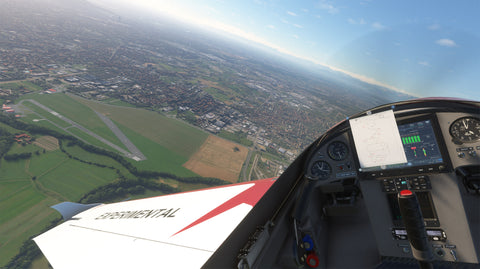


Virtualcol is proud to present this pack only with the most relevant models, E190-E2 and E195-E2, for Microsoft® Flight Simulator. This is the new generation of Embraer airplanes. NOTE: This product is NOT a Study Level, just for game and fun, recommended for beginners and flight simmers.
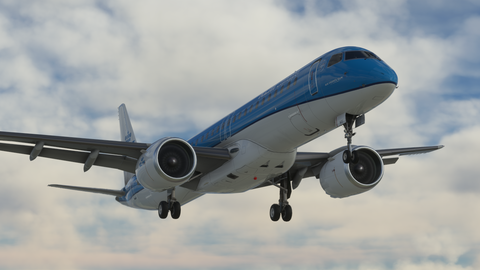

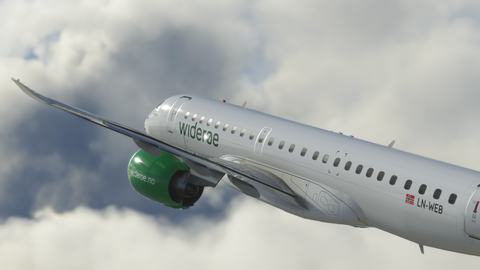

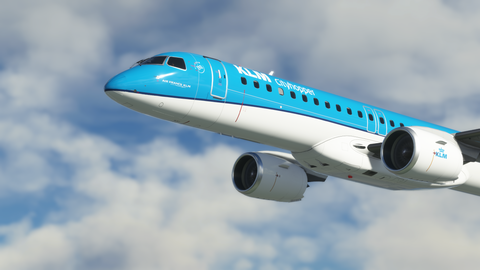

The FN.333 Riviera is a single-engine amphibious light aircraft by Italian aviation producer SIAI-Marchetti. The craft, which seats four, including the pilot, took its maiden flight on December 4, 1952 and was introduced a decade later after a number of refinements. A total of 29 were built, and some continue to fly to this day.
The Riviera is a favorite among adventurous pilots as it open up wide horizons of travel with its ability to operate off of either land or water. The FN.333 Riviera is composed of a stout hull-fuselage that features a high wing and a twin-boom tail assembly. It has retractable tricycle landing gear, a pusher configuration propulsion system, and retractable floats that seat into its wing tips. The amphibian measures 23 feet, 11 inches long and has a wingspan of 34 feet. It is powered by a 6-cylinder Continental IO-470-P piston engine that produces up to 260 horsepower and drives a 3-blade constant-speed propeller. The Riviera has a range of 560 miles, a ceiling of 20,000 feet above sea level, and a climb rate of 1,280 feet per minute. It requires 900 feet of take-off run on land and 1,380 feet on water. It cruises at 165 miles per hour and has a top speed of 180.
The FN.333 Riviera is a machine built for aviation-explorers. Agile, with just enough power and low-speed control to get into and out of tight locations, this flying boat brings some of the globe’s farthest-flung destinations within reach.

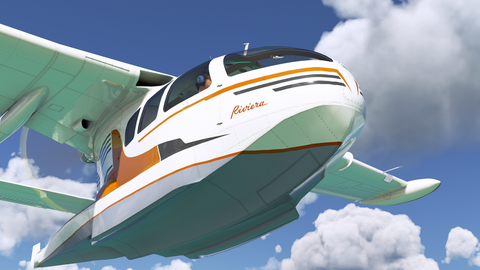

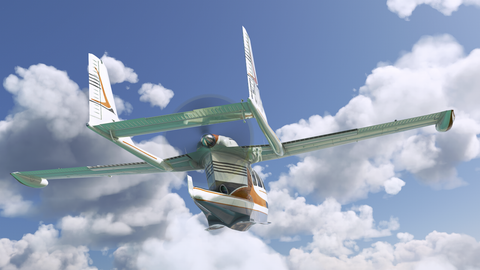

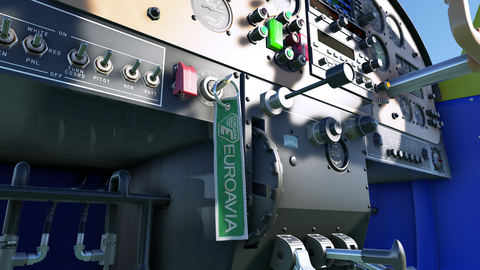
The Wren, designed by W. O. Manning, was a lightweight motor-glider. Manning was a designer of flying boats and decided to try a simpler project.
The Wren was a single-engined high-wing monoplane with an empty weight of only 232 lb (105 kg). The first aircraft (Serial Number J6973) was built in 1921 for the Air Ministry. Interest in building very light aircraft was encouraged at the time by a £500 prize offered by the Duke of Sutherland (who was the Under-Secretary of State for Air).
The entrants had to build the most economical light single-seat aircraft. Another incentive was a £1,000 prize offered by the Daily Mail for the longest flight by a motor-glider with an engine of not more than 750 cc. Two aircraft were built for the 1923 Lympne light aircraft trials in October 1923.
The Wren shared the first prize with the ANEC I when it covered 87.5 miles (140.8 km) on one Imperial gallon (4.5 litres) of fuel.
In 1957 the third aircraft was rebuilt using parts of the second aircraft. It is still airworthy and is on public display at the Shuttleworth Collection at Old Warden Aerodrome in Bedfordshire.
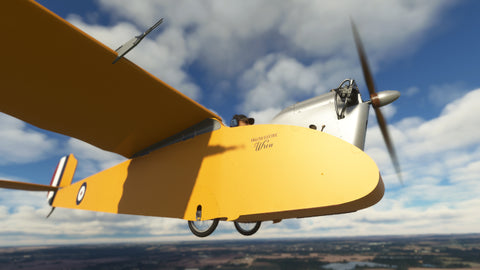

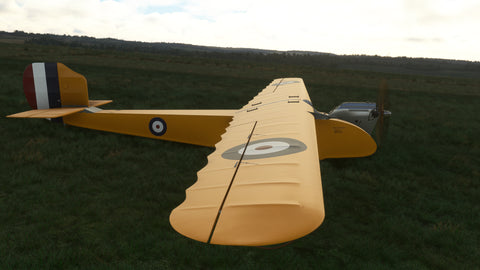
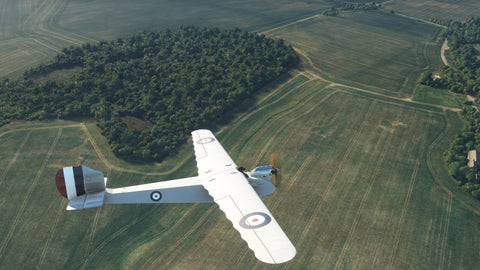
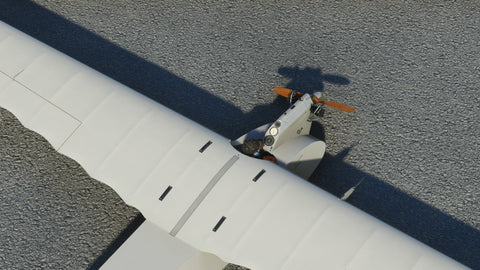
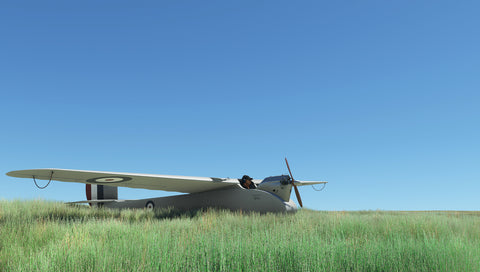
Ed Fisher first designed the Zippy Sport, which was officially introduced in 1983 as a participant in the Dupont/Western Flyer design contest, and was marketed through Fishercraft.
It is not the design prototype, but rather, the “proof of plans” aircraft. This “Sport Plane” was identified as an ARV, (Air Recreational Vehicle). At that time, designer, Ed Fisher flew the Zippy with a Cuyuna 430 dual carb engine, and a Winters 2:1 planetary gearbox. Over the next couple of years a full VW 1200 driving from the heavy end was fitted. Through, much of 1986, the aircraft was VW powered, while “debugging” flights took place.
Green Sky Adventures had been interested in the Zippy's development from the early stages. By 1986, the Rotax Service Center was in serious need of a test platform with a broad speed range to explore the effects of variable loads on small engines in general, and Rotax 2-strokes, in particular. A deal was struck with Ed Fisher, and by late fall of that year, Green Sky Adventures were flying a Rotax 503 powered Zippy Sport, enjoying its handling and speeds to 120 mph.
This Add-on is based on the VW variant.
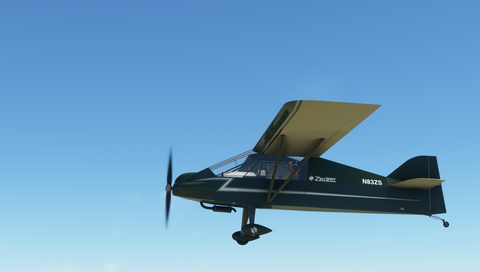
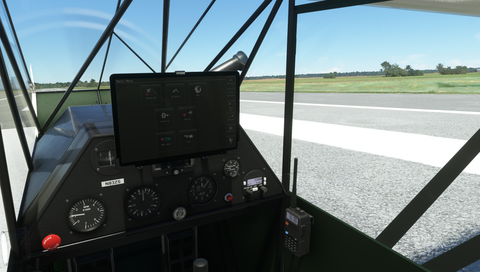

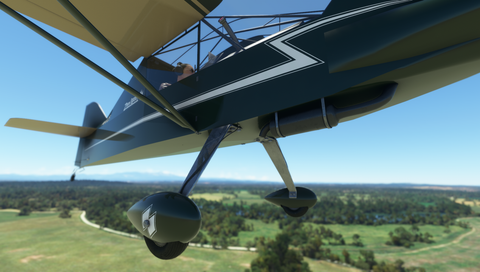

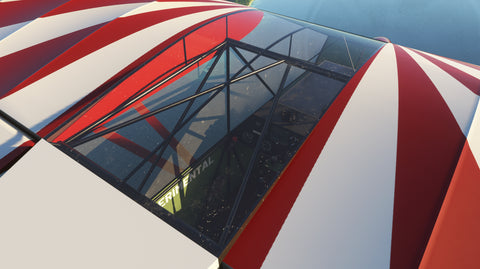
The Aeromobil 3.0 is a Flying Car prototype that was unveiled at the Pioneers festival in Vienna, Austria, in October 2014. It was designed and manufactured by Slovakian company Aeromobil, the car can be used on the road and in the air, and can take off and land using any grass strip or paved surface.
The Aeromobil 3.0 first flew in October 2014 and since then work on the Aeromobil 3.0 was stopped.
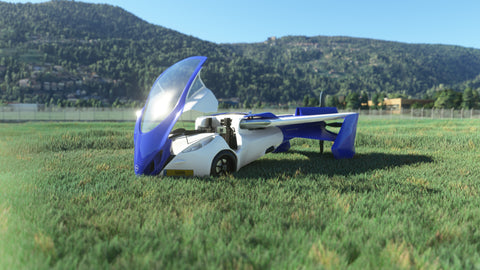
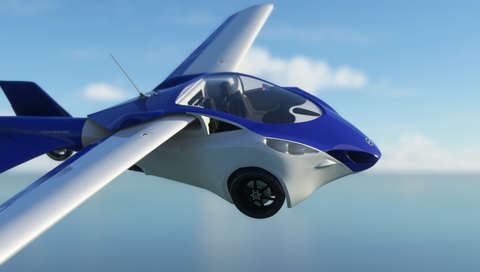
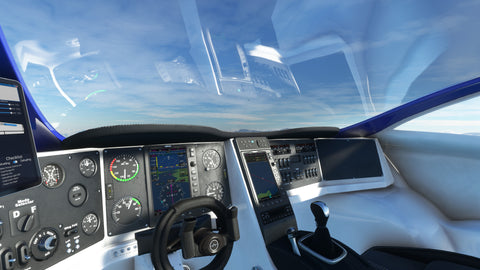
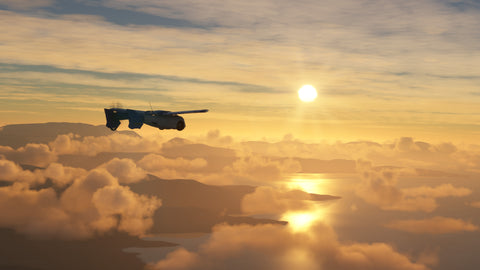
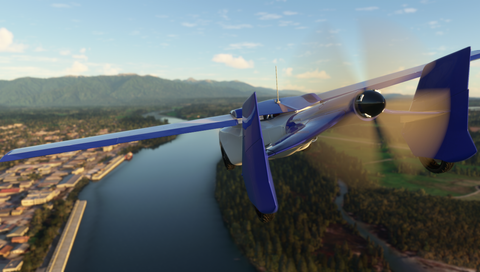
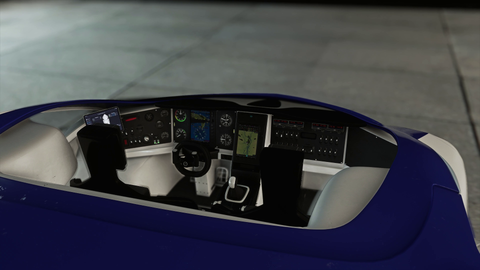
Introducing the Ninja of the Skies! The KwikFlight Spirit has been built by industry veterans, whose expertise is unparalleled. Bringing you a fun, interactive and most importantly, accessible experience! This Spirit includes many fantastic features, including some that are exclusively available through the iniBuilds Store!
This livery pack adds 15 additional liveries from the USAF to the Spirit.

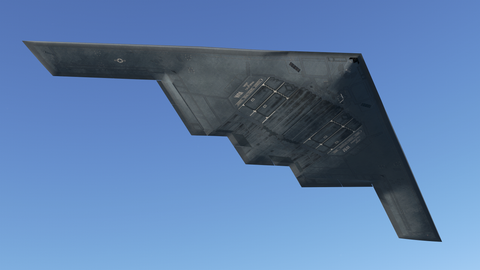




The DA20-C1 is a two seat, single engine aircraft. Using 100 or 100LL fuel and having its first flight in 1991, the DA20 has seen more than 1000 models produced. SimSolutions rendition of the DA20-C1 Eclipse comes with real world experience with high-resolution textures, user friendly systems, and superb modeling inside and out.
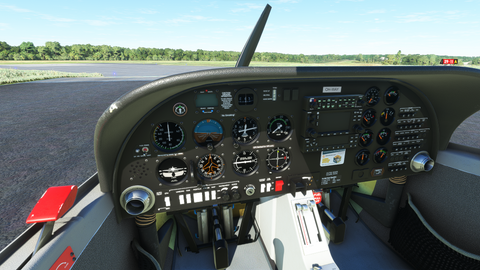


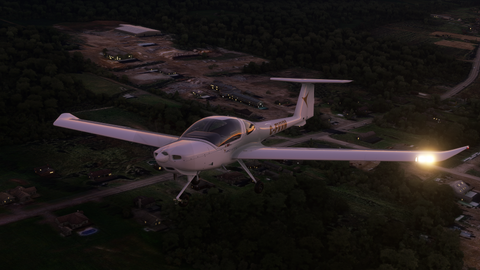
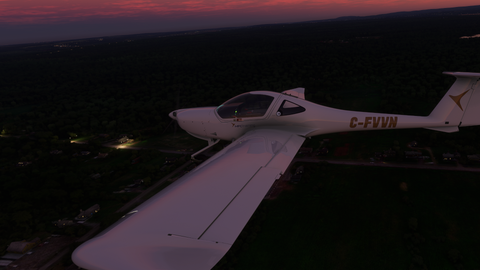

Introducing the Ninja of the Skies! The KwikFlight Spirit has been built by industry veterans, whose expertise is unparalleled. Bringing you a fun, interactive and most importantly, accessible experience! This Spirit includes many fantastic features, including some that are exclusively available through the iniBuilds Store!
These include: Animated engine secondary intake vents, strike bay doors, stealth mode and air-to-ground strike capabilities!
The Spirit merges the thrill of flight with the lust for speed as well as stealth!
The sleek exterior & interior brings this aircraft to a new level of immersion for your flying experiences. KwikFlight have included an array of spectacular liveries, both real and fictional for you to take to the skies in as well! Every aspect of this creation makes it a must-have addition to your flight simulation hangar!



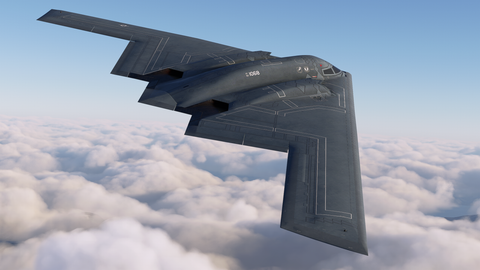


The DA20-C1 is a two seat, single engine aircraft. Using 100 or 100LL fuel and having its first flight in 1991, the DA20 has seen more than 1000 models produced.
SimSolutions rendition of the DA20-C1 Eclipse comes with real world experience with high-resolution textures, user friendly systems, and superb modeling inside and out. With custom loading screens on the GNS, to by the books transponder and clock system, a joyride is in the hands of the P.I.C.

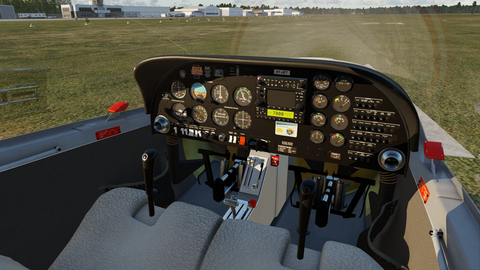
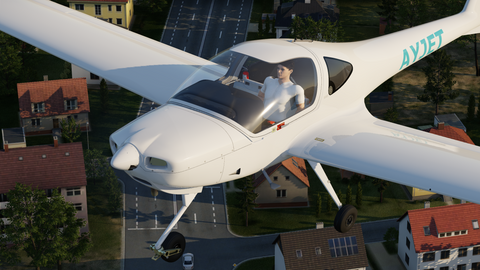
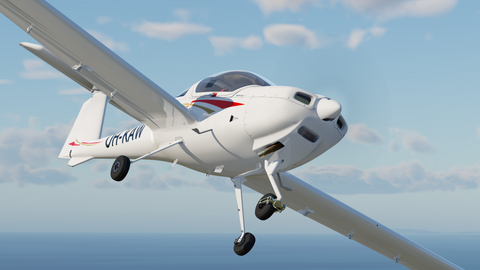


From the creator of helicopters for X-Plane, such as the 206B3, 206L3, 222B, 222UT, 500E and H125/AS350B3e, the CowanSim 222B is the 5th helicopter of the fleet to come to Microsoft Flight Simulator. Cowan Simulation strives for perfection and continuously updates their fleet using valuable feedback from pilots around the world. The 222B, and subsequent releases, will continue to be developed using that valuable information. CowanSim's flight models are pilot tested, approved and developed with the Microsoft Flight Simulator SDK. No external flight model/dynamics or programs are used to provide a seamless user experience.
The 222B comes with a luxury and medical (HEMS) interior, 45 liveries and an easy to use paint kit that is provided in both GIMP and Adobe Photoshop formats. The medical version is livery specific and only available when selecting a medical livery.
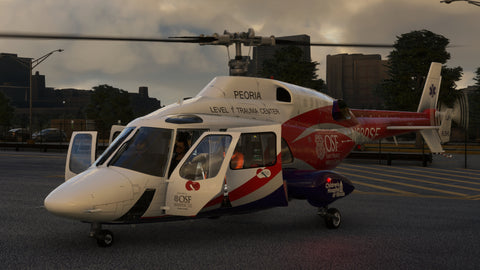





The Bulldog Autogyro was a one off, It's unknown if the prototype flew but flight testing was supposed to have happened around July 2015. It was publicly introduced at the AERO Friedrichshafen airshow in 2015. The designers did an amazing job at creating a modern Autogyro with a classic look, mainly made from carbon fibre the Bullldog is light and comes into the Ultralight category.
The Bulldog features a single main rotor, a two-seats-in tandem open cockpit with two windshields, conventional landing gear and a nine-cylinder, air-cooled, four-stroke, dual-ignition 150 hp (112 kW) Rotec R3600 radial engine in tractor configuration. The aircraft fuselage is made from composite materials.
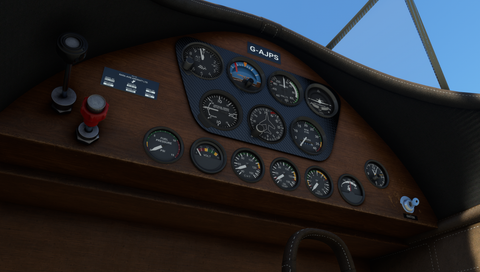
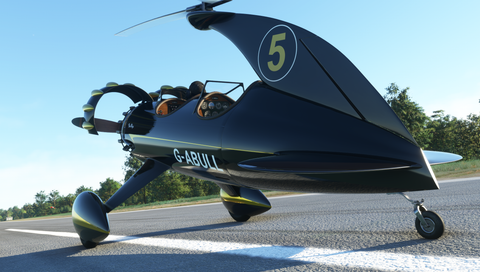
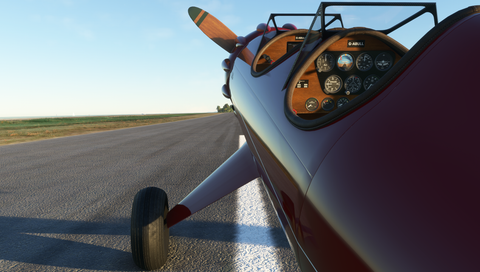
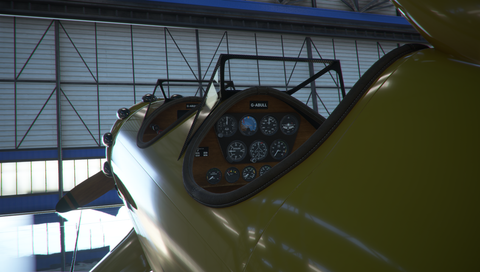
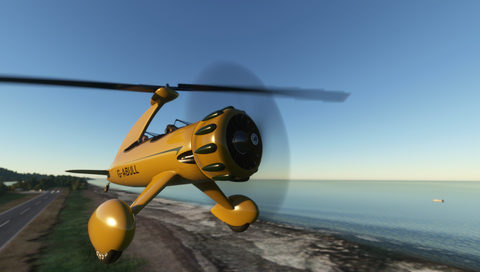
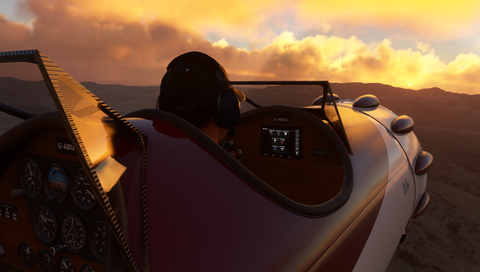
From the creator of helicopters for X-Plane, such as the 206B3, 206L3, 222B, 222UT, 500E and H125/AS350B3e, the CowanSim 206L3 is the fourth helicopter of the fleet to come to Microsoft Flight Simulator. Cowan Simulation strives for perfection and continuously updates their fleet using valuable feedback from pilots around the world.
The 206L3, and subsequent releases, will continue to be developed using that valuable information. CowanSim's flight models are pilot tested, approved and developed with the Microsoft Flight Simulator SDK. No external flight model/dynamics or programs are used to provide a seamless user experience.

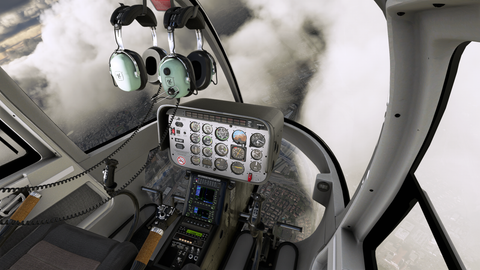
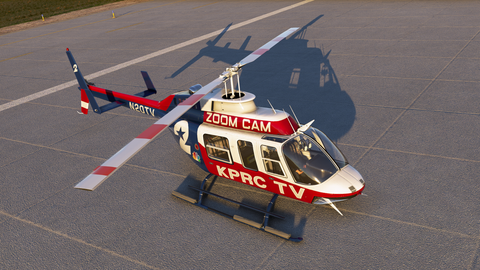

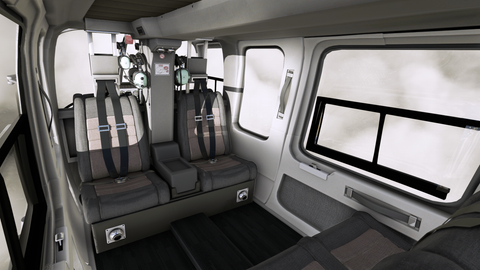
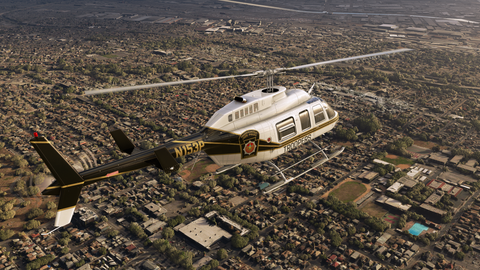
The Machine:
A fully aerobatic, very-light Jet that compares to the Bede BD-5J, but heavier and sporting two instead of one TRS-18 turbojets. Up to Mach 0.47 and 650 NM of range, with a service ceiling of 25000ft. A low stall speed (for a jet) makes the aircraft good for short field operations. Certified for VFR operations only, yet includes a good avionics suite. This is a "Classic" aircraft featuring "Steam" gauges and radios. Yet, controls and systems are easy to operate.
The History:
The C-22J is the last aircraft to be adorned with the legendary Caproni name. Originally known as "Caproncino", then marketed as "Ventura". A very-light jet developed in the 1980s as a military trainer, surveillance and reconnaissance aircraft. Powered by two TRS-18 turbojets fed from a dorsal NACA intake, the aircraft reached Mach 0.47 and was fully aerobatic. The airframe shows its origin in a glider design, the Caproni A-21 Calif. After the merger with SIAI Marchetti, the project was cancelled in favor of the SF-260.

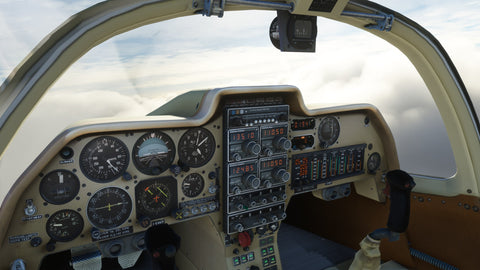

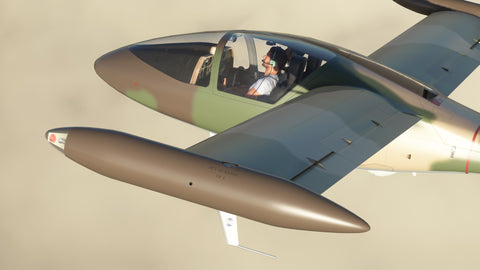


FlyBoy Simulations is introducing the RANS S6S coyote 2! The RANS S6S is single engine, two seat, high wing aircraft manufactured by RANS Inc. There are many different variants of this aircraft, but the one featured here (S6S) is using a trustworthy Rotax 912ULS engine delivering 100 HP. It is a very capable bush plane with great STOL characteristics and it will get you anywhere if you are not in a hurry. If you are a fan of exploration and bush flying this aircraft might just be for you! Now includes amphibious variant!
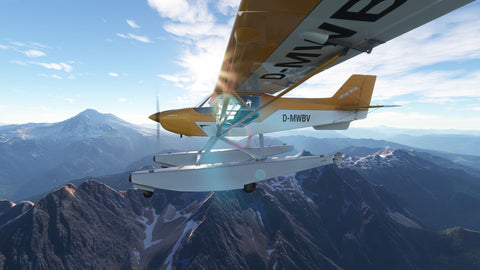
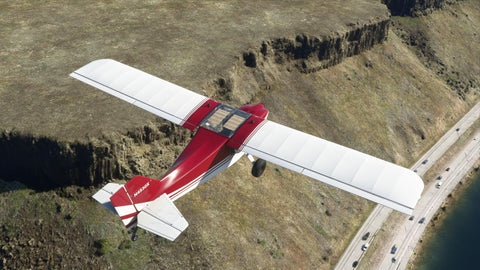
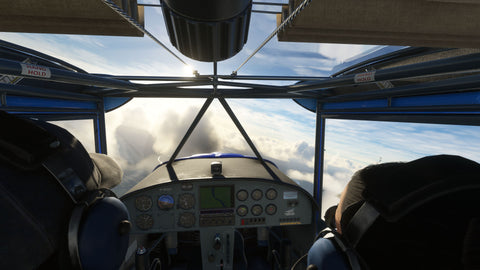
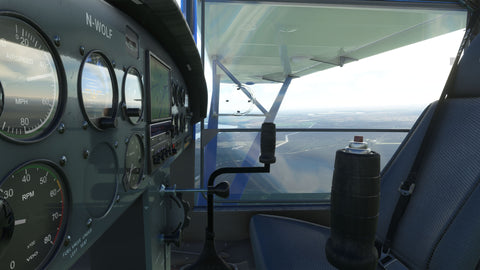


From the creator of helicopters for X-Plane, such as the 206B3, 206L3, 222B, 222UT, 500E and H125/AS350B3e, the CowanSim H125/AS350B3e is the third helicopter of the fleet to come to Microsoft Flight Simulator. Cowan Simulation strives for perfection and continuously updates their fleet using valuable feedback from pilots around the world.
The H125, and subsequent releases, will continue to be developed using that valuable information. CowanSim's flight models are pilot tested, approved and developed with the Microsoft Flight Simulator SDK. No external flight model/dynamics or programs are used to provide a seamless user experience.
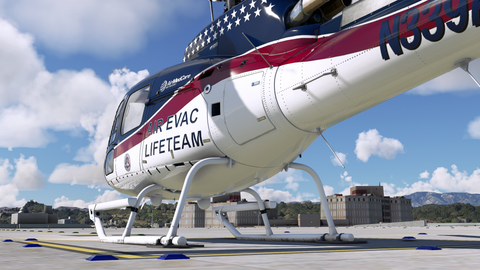
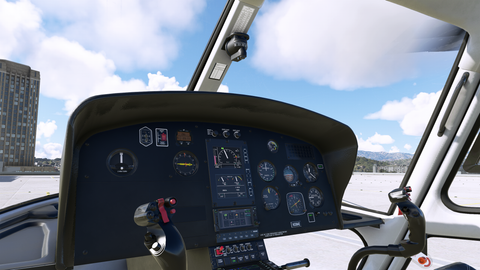
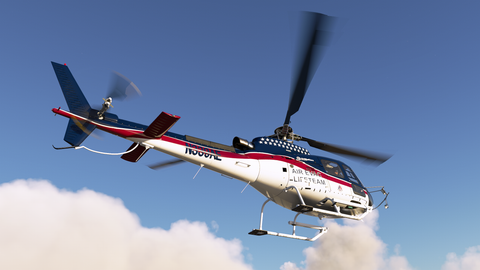


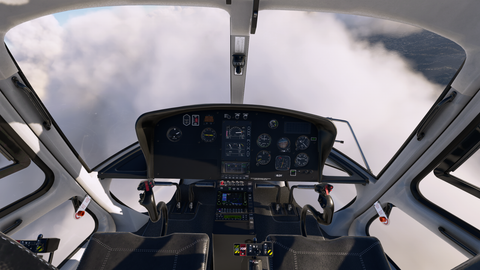
The Maule M7-235 is a single-engine, high-wing, light utility monoplane by American aircraft producer Maule Air. The airplane is a STOL, or short take-off and landing craft, and has seating for up to five, including pilot.
The M7-235, nicknamed “Super Rocket,” is renowned for its versatility and ability to operate out of rugged, unimproved airfields, and for its power. The M7-235 features a fuselage that is framed with chromoly (chrome molybdenum) steel tubing, a strut-braced, all-metal wing, and a traditional undercarriage.
The aircraft measures 23 feet, 6 inches in length, stands 6 feet, 3 inches tall, and has a straight main wing with a span of 33 feet, 6 inches. The aircraft is powered by a 235-horsepower Lycoming IO-540-W 6-cylinder piston engine. It has a range of 550 miles, a stall speed of 49 miles per hour, and a cruising speed of 147 mph. Sturdily constructed, powerful, and a great STOL performer, the Maule M-7-235 is a machine ready for flight throughout the globe. This variant features floats, allowing operation from lakes, gently flowing rivers, and other calm bodies of water.
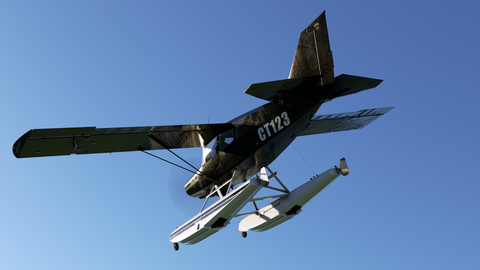
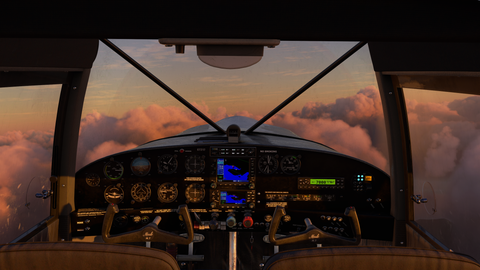
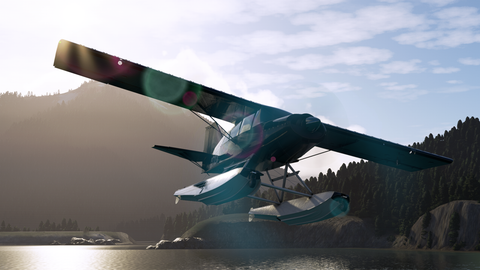

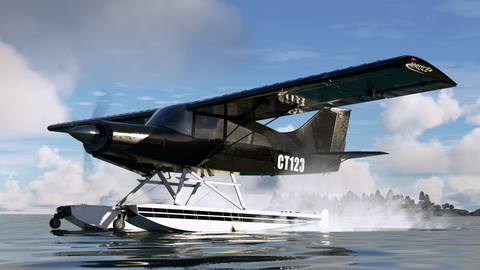

Mikoyan-Gurevich MiG-15 (NATO reporting name: "Fagot") is a jet fighter developed for the Soviet Union by Mikoyan-Gurevich OKB. MiG-15 is often mentioned along with the North American F-86 Sabre as among the best fighter aircraft of the Korean War and in comparisons with fighters of other eras.MiG-15bis is an improved MiG-15 version; the main difference is the improved engine, the Klimov VK-1.
Noticeable change is a huge improvement of thrust-to-weight ratio, making the MiG-15bis one of the best climbing planes compared to other planes at similar battle rating. The other modifications include hydro booster ailerons control to help aircraft keep high roll rate when maneuver, improved avionics, radio navigation, It also served as the starting point for development of the more advanced MiG-17.


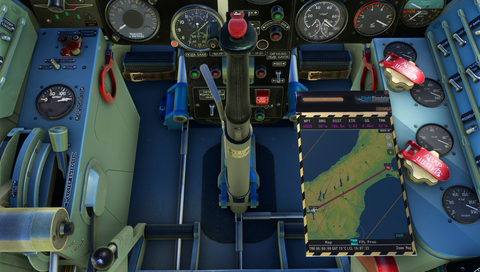
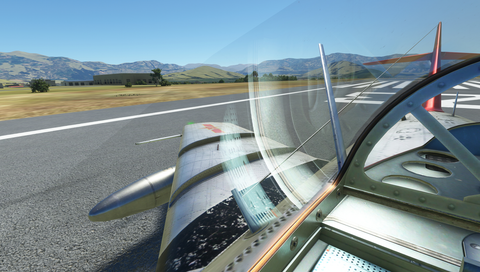

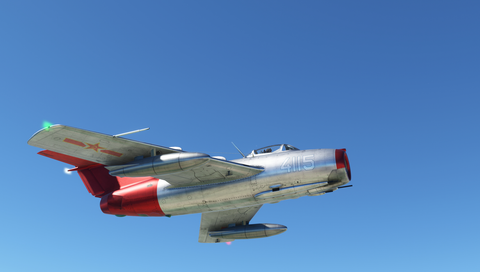
The HM.14 is most commonly described as a tandem wing aircraft, although the main wing overlaps the rear wing in the basic design, so it almost qualifies as a highly staggered biplane without horizontal tail.
Construction of the airframe employs mostly birch plywood sheet, spruce laths, steel tubing, steel cables, proprietary metal fittings and fixings, adhesives, and linen fabric. The prototype HM.14 had a wingspan of 5.5 m (18 ft). It was powered by an Aubier et Dunne 540 cc three-cylinder two-stroke motorcycle engine, producing about 17 hp (13 kW) at 4,000 rpm. The engine was connected to the propeller shaft via a chain drive with a 2.5:1 reduction ratio. Subsequent examples were built with many optional engine and wingspan variations. Unlike conventional aircraft, the HM.14 has no ailerons or elevators, and no foot-operated flight controls. The flight control system comprises a conventional control stick.
Fore-and-aft movement of the stick is transmitted via cables to the rear underside of the main wing, that is supported by a single pivot at the front underside, mounted on a pylon on the fuselage. Rearward movement of the stick pulls the cables, and increases the pitch and therefore the lift of the main wing. The aircraft will then pitch up, due to the centre of pressure being forward of the centre of gravity. Side-to-side movement of the stick controls the all-moving rudder via cables. In flight, this produces a stable rolling motion, as required in a banked turn, because the wings both have dihedral. That rolling characteristic is not safely available during take-off or landing, so crosswinds are not easily tolerated.
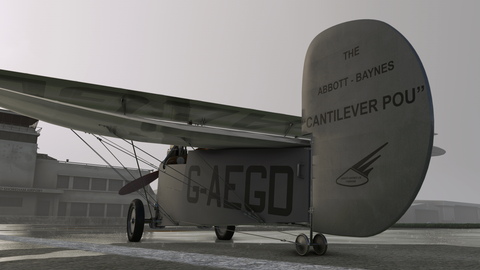
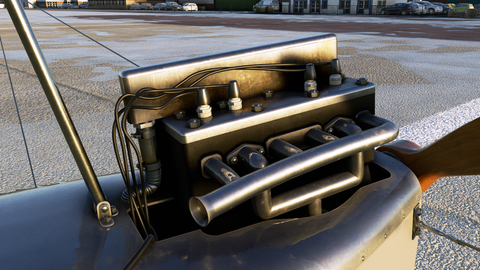
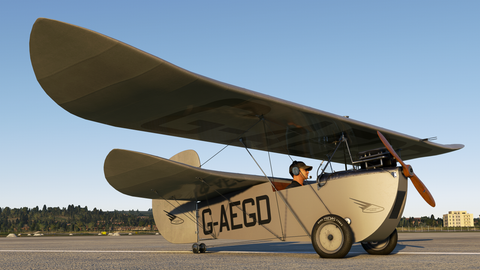
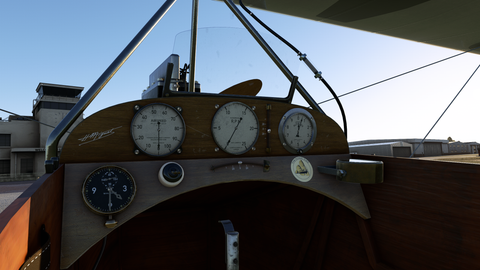
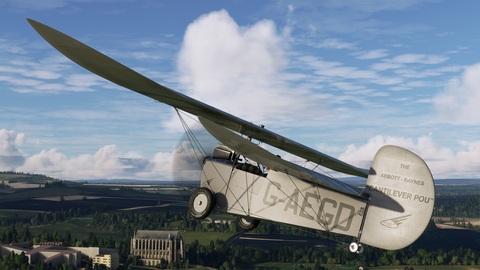

Virtualcol is thrilled to bring you a recreation of the Embraer ERJ 190 and 195 for Microsoft Flight Simulator, including a glass cockpit and original sounds. This pack includes 2 models: ERJ190 and ERJ195.
The Embraer 190 is a commercial jet that can hold 98 passengers. Designed by Embraer of Brazil, it joins other great planes as a part of this line. Launched in June 1999, it wasn’t until March 2004 that it took its first flight; however, thanks to its great development and impressive design, it’s a comfortable and excellent jet for taking to the skies. The company constructed a 95 m wide and 5000 m long runway for this use – the longest in South and Central America.An advanced-range version of the jet was announced in early 2005. These features improved reinforcements throughout the jet, allowing for higher weight at the landing and take-off. Not only that, but these advanced jets have an improved range. They do, of course, come with a higher price tag.
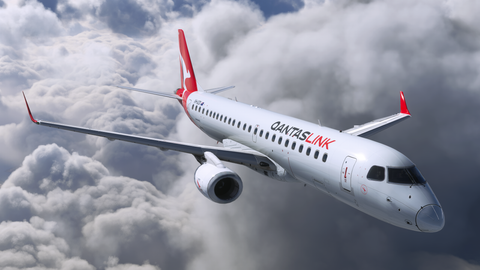
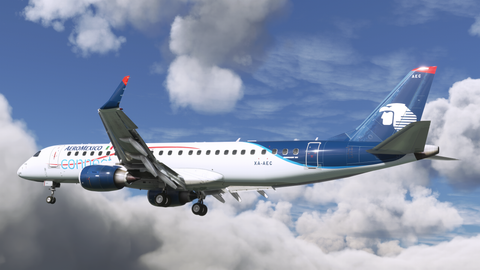
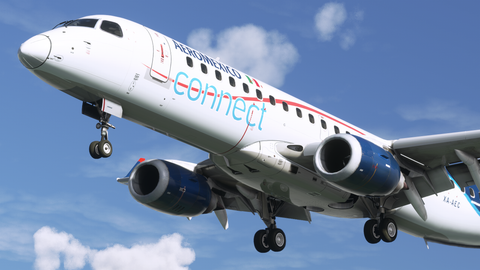
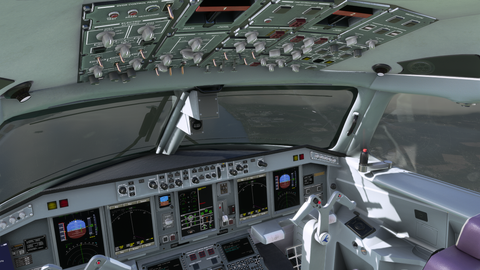
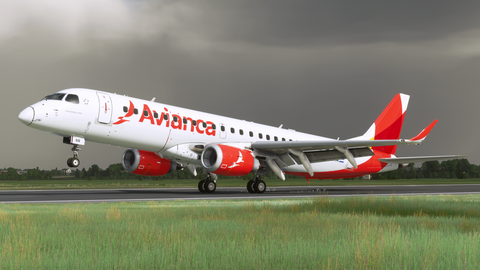
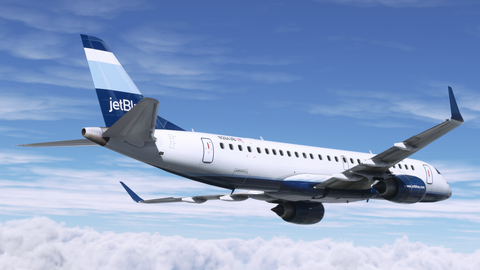
Virtualcol are proud to present their second product for MSFS. This time is taking care of the details and functionality to the maximum allowed by Microsoft Flight Simulator 2020. Like others developed by Virtualcol, this product keeps beginners and flight simmers in mind. However, it fulfills our policies for basic standards, and its price makes it very affordable for all customers. THIS IS NOT A STUDY-LEVEL PRODUCT! This time they deliver three models: ERJ170, ERJ175, and ERJ175, with Winglets extended and 30 repaints in UHD format to avoid losing details.
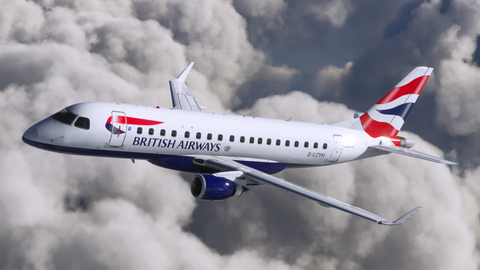

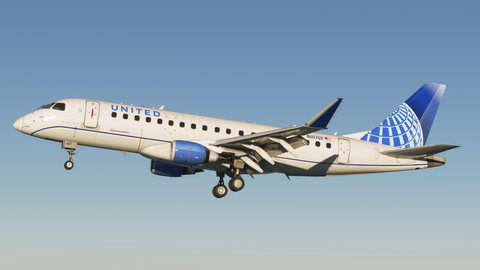
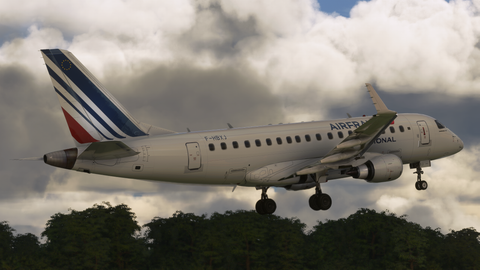
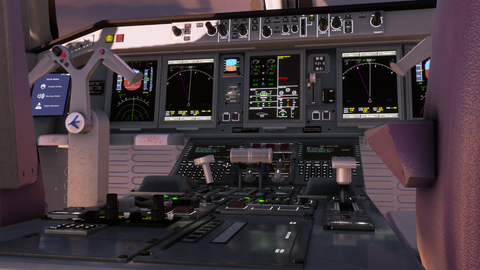
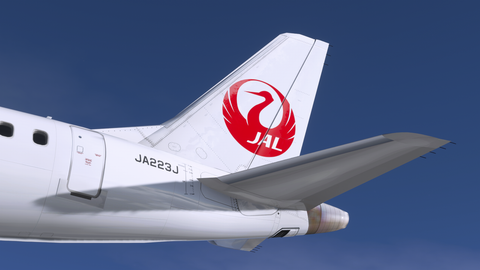
Introducing the Bf 108 Typhoon! Designed by the well known Messerschmitt company, it is a German single-engine sport aircraft that was first introduced in 1935. With 885 aircraft built, it was used by various operators all around the world - from Germany to Japan. During the course of WWII, the Typhoon was implemented into different roles such as a personnel transporter and liaison aircraft.
With a host of features, from the latest in Microsoft Flight Simulator's CFD technology, custom fuel system, feature rich EFB and much more, we're sure there will be something for everyone in this aircraft!

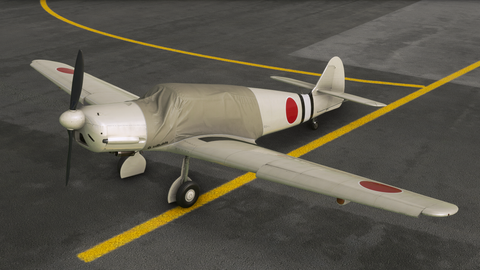

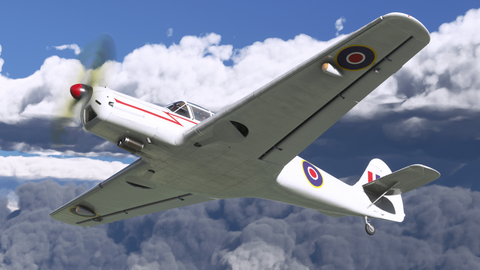

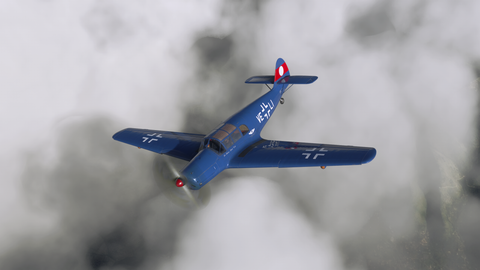
The CowanSim 500E v2.0 is our newest edition and now available on PC. At Cowan Simulation we strive for perfection and continuously update our fleet using valuable feedback from pilots around the world. The 500E, and subsequent releases, will continue to be developed using that valuable information. Please remember that updates take time. All good things take time.
CowanSim flight models are pilot tested, approved and developed with the Microsoft Flight Simulator SDK. No external flight model/dynamics or programs are used to provide a seamless user experience.
The throttle and idle stop on this model can be mapped to your hardware. All other bindings are functional as well. This helicopter uses persistence code to save your weight and balance settings, as well as all visible options/models, for your next flight. Please read the manual that comes with this helicopter, it will answer a lot of your questions and has a clear explanation for all hardware bindings. The manual is located inside of the package folder. For your convenience, there is an online manual and checklist that you can find here.
Options like the Cineflex camera, passengers, spray kit, spotlight and more are available through the weight and balance settings window. Your settings will be saved for your next flight. The 500E comes with 63 liveries, and an easy-to-use paint kit is provided in GIMP and Adobe Photoshop formats. A Blender model is also provided for all the 3D painters out there.
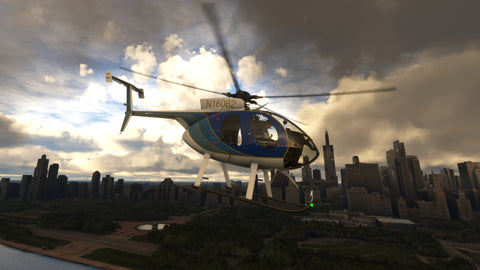
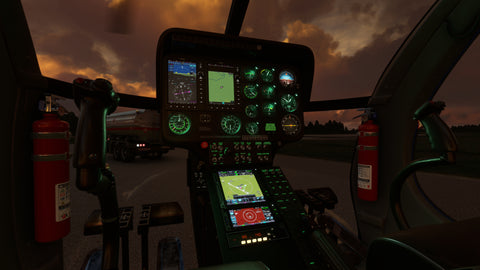
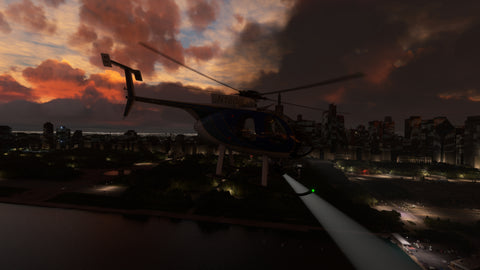
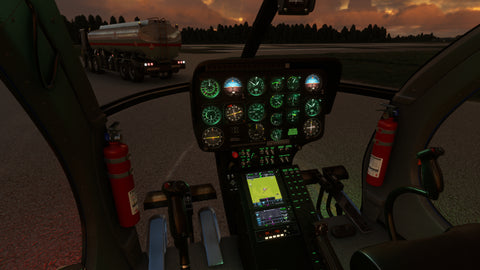
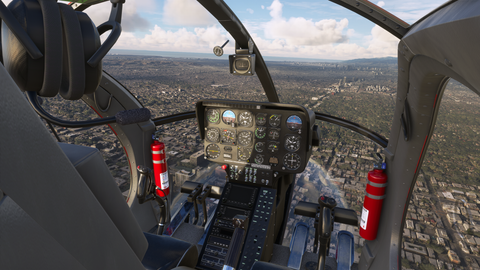
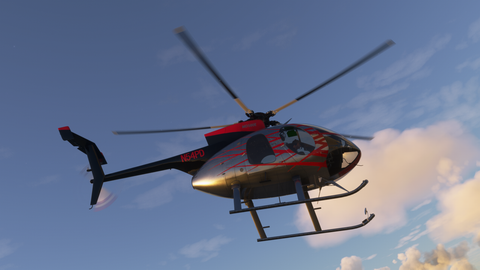
The RV-10 is a single-engine, low-wing, homebuilt kit monoplane by Van’s Aircraft Inc. A four- seat version of their successful RV line, the design is popular as a touring aircraft, and over 1,000 have been built to date.
Created under license by Van’s Aircraft, the SWS RV-10 is a faithful recreation of its real counterpart. Featuring a high-detail 3D model, detailed animations and authentic sounds recorded from the real aircraft, the SWS Van's RV-10 looks and sounds like the real thing. The flight model was created using flight data from the real aircraft and tested by RV-10 pilots, ensuring that the performance and feel is as close as Microsoft Flight Simulator allows
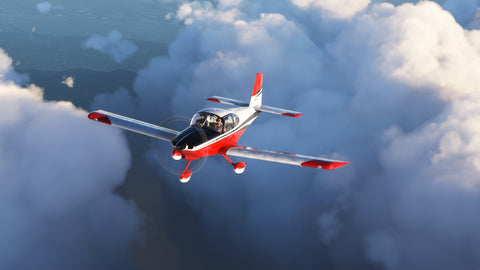
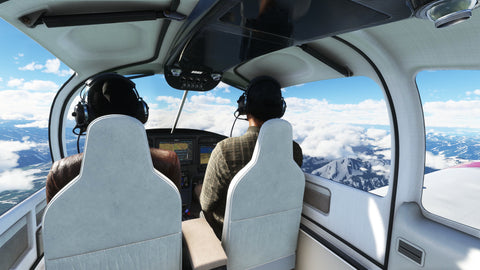
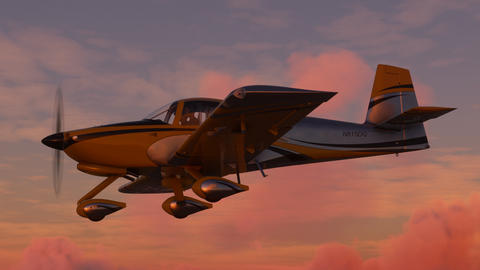
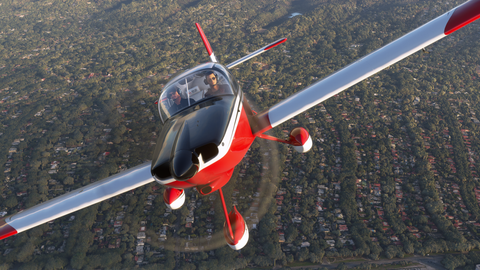
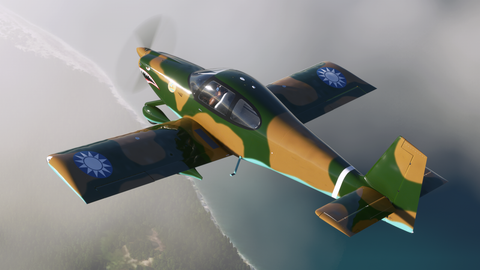
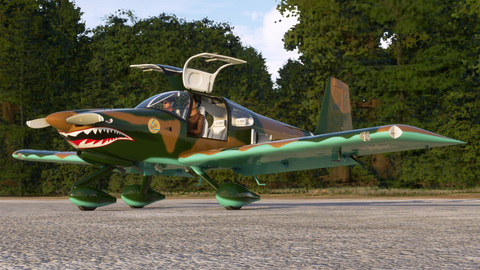
Manufactured by the Brazilian aerospace company Embraer, the EMB-110 Bandeirante is a twin-engine, turboprop, regional airliner and utility aircraft, with STOL capabilities, capable of transporting up to 21 passengers or cargo up to a distance of 1,080 nm and a service ceiling of up to 21,000 feet. It is powered by two Pratt & Whitney Canada PT6A-34 turboprop engines, with a thrust rate of 750hp per engine, and a three-blade, fully-feathering, reversible-pitch, constant-speed Hartzel propeller on each engine.
Built from the ground up and using the latest design and development standards, this product features a high-quality and accurate rendition of the EMB-110 Bandeirante ever designed and developed for Microsoft Flight Simulator, with simplified systems programming, modern avionics and lots of fun to fly, allowing you to enjoy the best flight-simming experience.
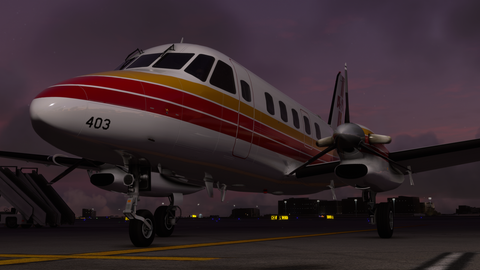
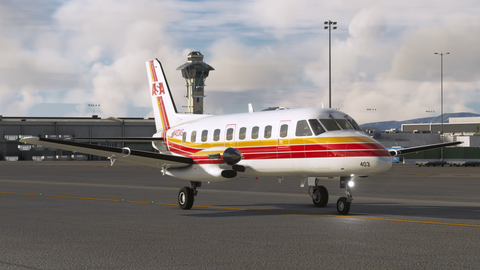
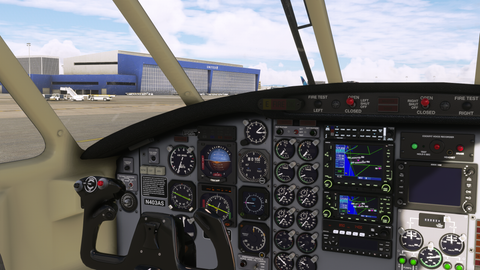
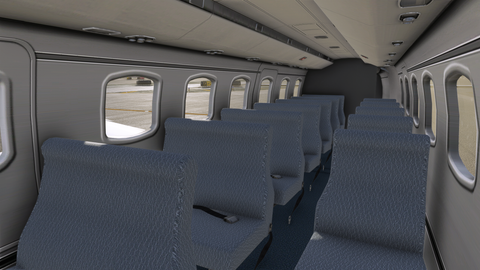

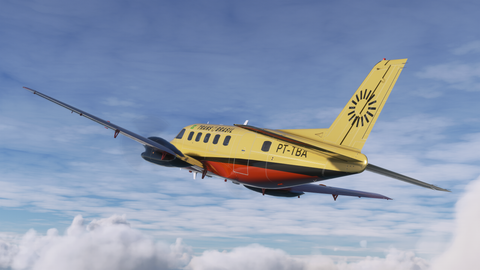
From the creator of helicopters for X-Plane, such as the 206B3, 206L3, 222B, 222UT, 500E and H125/AS350B3e, the CowanSim 206B3 is the first helicopter of the fleet to come to Microsoft Flight Simulator.
Cowan Simulation strives for perfection and continuously updates their fleet using valuable feedback from pilots around the world. The 206B3, and subsequent releases, will continue to be developed using that valuable information. CowanSim's flight models are pilot tested, approved and developed with the Microsoft Flight Simulator SDK. No external flight model/dynamics or programs are used to provide a seamless user experience.

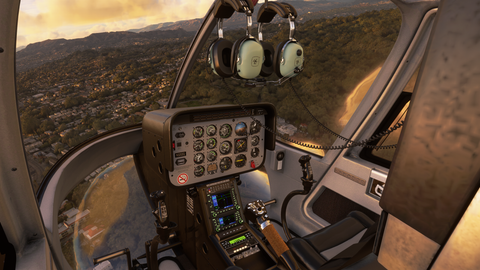
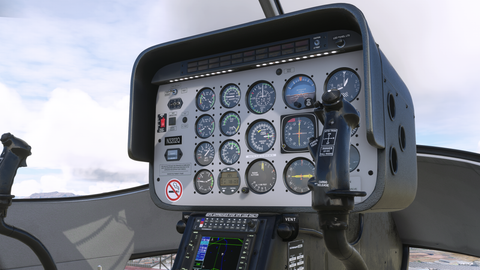
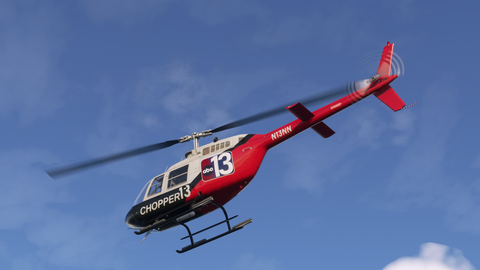
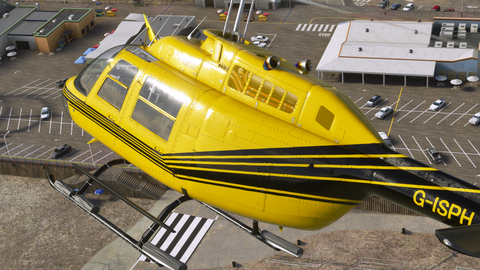
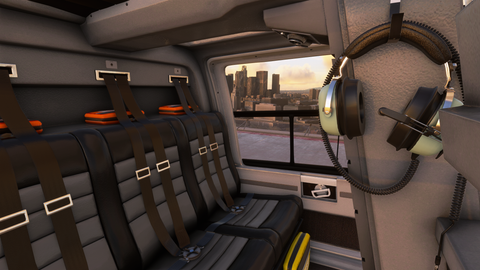
Cockspur are happy to bring you their rendition of the C510 Mustang for Microsoft Flight Simulator. This aircraft has been long in the making and is a project of passion. They have put many man-hours into this aircraft, and have tried to recreate it after it’s real-world counterpart with as much detail as possible.




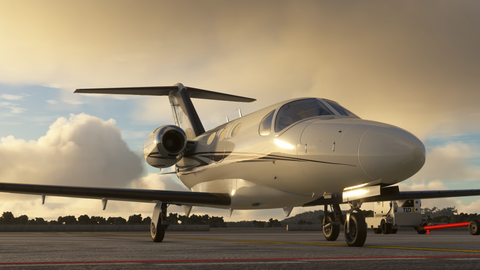

Introducing the well-known Curtiss P-40F WarHawk. It was ubiquitous and one of the best fighter planes of its era. The plane was produced at a large scale due to the time of its introduction in WWII. The P-40F played a critical role as ally forces used it as an air superior fighter, bomber escort, and fighter-bomber in various regions of the world between 1941 and 1944.
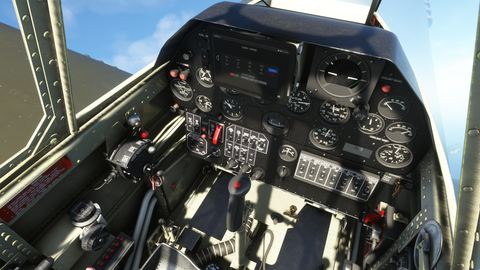





Introducing, the Kitfox Speedster Series 7 for Microsoft Flight Simulator 2020 by Project Stratosphere, developed by Adi S.
The Kitfox Speedster Series 7 by Denny Kitfox is a single engine, 2 seater, amateur built kit plane. The speedster variant of the Kitfox Series 7 line up is much like the Speedster Series 4, but with shorter wings and a faster roll rate compared to other Kitfox aircraft, to increase speed and roll rate. The Kitfox brand has a reputation for making high performance aircraft, capable of extremely short landings and takeoffs, which is excellent for bush flying. Kitfox offers a series of engines to be implemented into their aircraft, all made by the Austrian company Rotax. This addon features the Rotax 912 iS, a four-stroke piston engine, with the capability of producing up to 100 horsepower. This engine is paired with an Airmaster Propeller. These propellers come with a controller system, to change the angle of the blade. This controller has been implemented in this addon.






Discover both the Wheels and Amphibian variants of the Kodiak 100 together in one, money saving bundle!
The Kodiak 100 Series III is a high-wing, single-engine turboprop aircraft, capable of transporting up to 9 passengers or cargo. The Series III comes equipped with a pitch-latch propeller and come out of the factory ready for floats, without requiring additional sealing or modification. Equipped with the Pratt & Whitney Canada PT6A-34 engine flat-rated at 750shp, the aircraft is capable of taking off from water in less than 1000ft from reaching take-off power, while still being able to operate from short fields and cruise fast at 160kts.
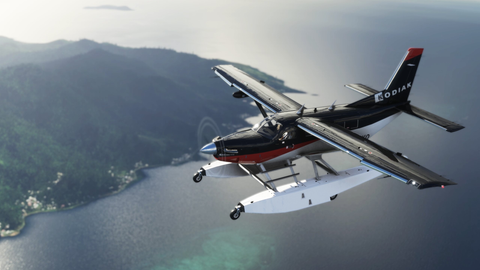
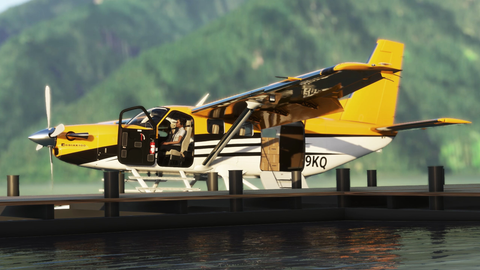
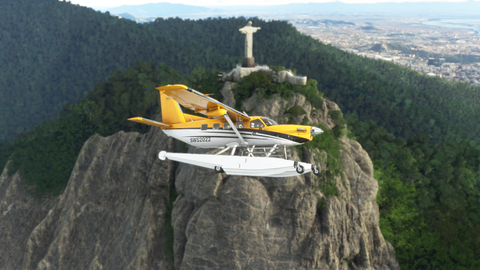
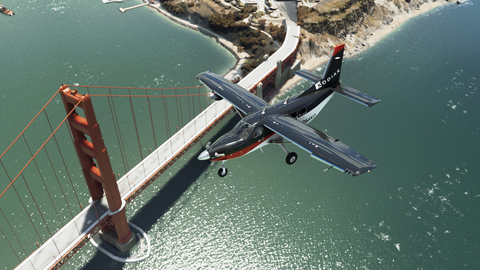
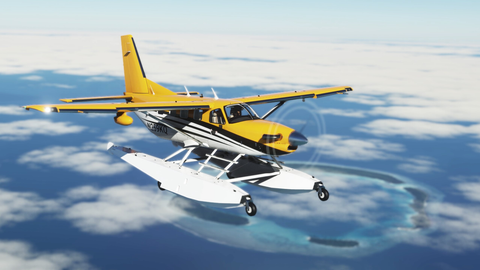
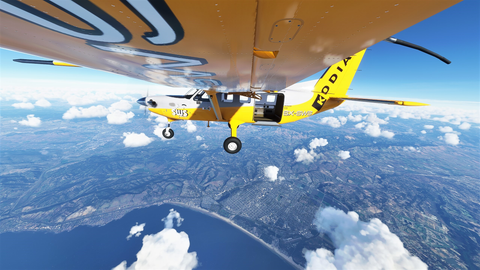
The Kodiak 100 Series II is a high-wing, single-engine turboprop aircraft, capable of transporting up to 9 passengers or cargo up to a distance of 1,132nm. Equipped with the Pratt & Whitney Canada PT6A-34 engine flat-rated at 750shp, the aircraft is capable of taking off and landing in less than 350ft, enabling it to operate from small, unprepared airstrips all over the world!
Created with the help of Daher and real Kodiak pilots, the SWS Kodiak comes in four different wheeled variants, featuring 40 different liveries, authentic flight dynamics and high quality systems modelling!
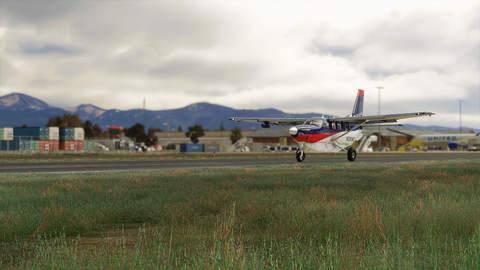

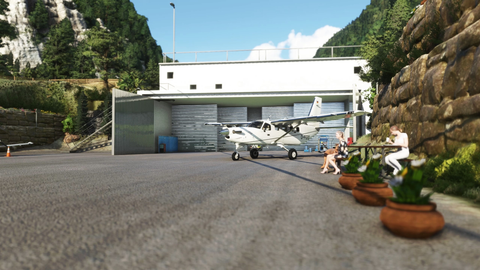
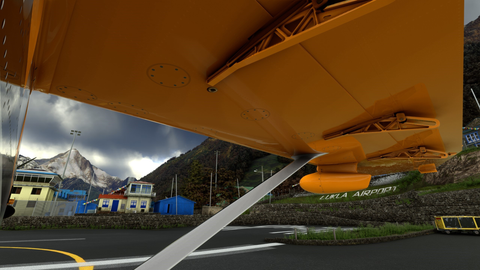
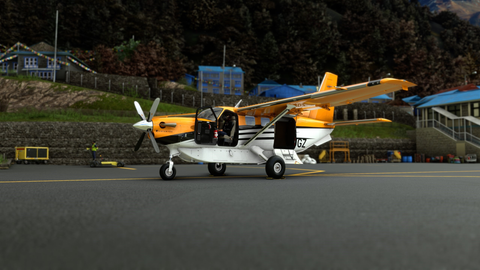

The Kodiak 100 Series III is a high-wing, single-engine turboprop aircraft, capable of transporting up to 9 passengers or cargo. The Series III comes equipped with a pitch-latch propeller and come out of the factory ready for floats, without requiring additional sealing or modification. Equipped with the Pratt & Whitney Canada PT6A-34 engine flat-rated at 750shp, the aircraft is capable of taking off from water in less than 1000ft from reaching take-off power, while still being able to operate from short fields and cruise fast at 160kts.
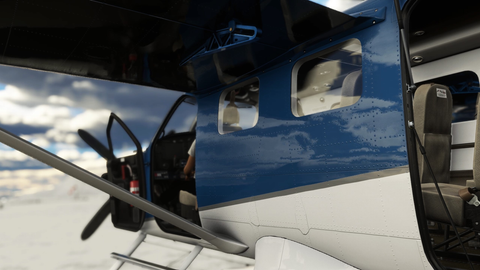
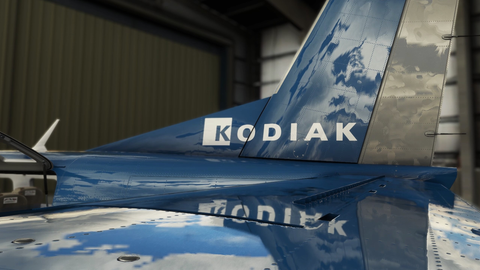
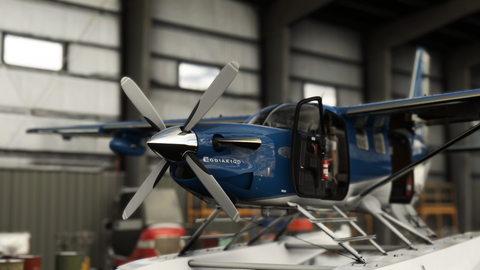
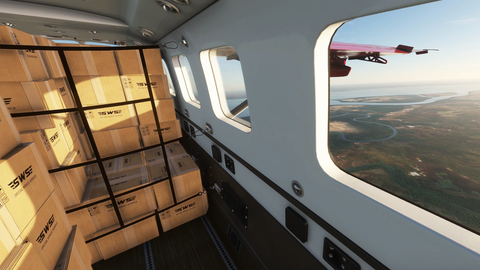
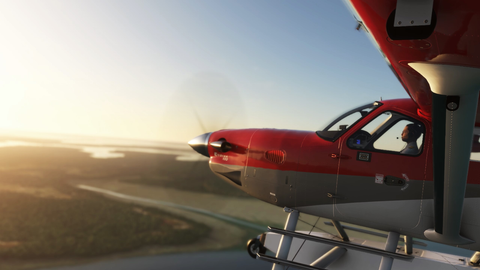
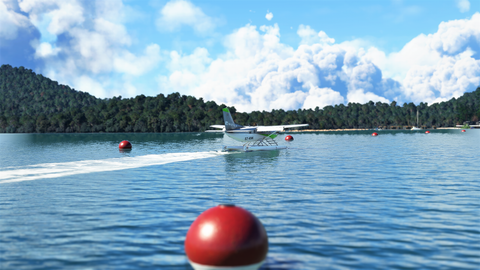
The Sbach 342 (XA42) is a low-wing aerobatic airplane monoplane with a fixed conventional landing gear with a tailwheel and carbon fiber fuselage. It is powered by a 315 hp Lycoming AEIO-580-B1A piston engine driving a three-bladed propeller. The XA42 is a tandem version of the single-seater XA41 (XtremeAir Sbach 300) which was designed by the same team in Speyer in 2004.






The CH2000 is a two seat, single engine general aviation aircraft. While being relatively unheard of, it is the perfect aircraft to start your training in, and could be a competitor to many other trainers. SimSolutions' CH2000 is a faithful rendition of the real aircraft with high-resolution textures, accurate flight characteristics, and an accurately modelled airframe.






The CFM Shadow is a two-seat ultralight class (called microlight in the UK) with a pod and boom design. They were built as a kit or by Cook Flying Machines (CFM). Nearly 400 aircraft were built from the early 1980’s through the early 2000’s. All models of the Shadow were powered either by a Rotax two cylinder, two-stroke engine which was mounted behind the fuselage on an exposed framework. The earliest versions were powered by 40hp Rotax 447 and later versions were powered by 65hp Rotax 582’s or 80hp Rotax 912’s. This version of the aircraft is a model D-D (the second D for dual-control), and is powered by the Rotax 582.
The Shadow was used and flown by David Cook (owner of CFM and aircraft designer) as a camera platform to film the “dragon eye” viewpoint footage for the movie Dragonheart in 1996. The Shadow has made flights from the UK-Australia, and from the UK-Beijing. Mr. Cook also, famously, flew a Shadow Streak to an altitude of 27,066’ in 1990.

